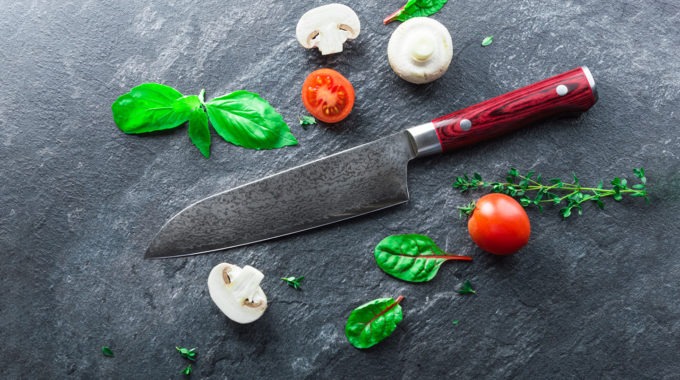Knives out: a better slice of the action
Every home cook needs a decent knife. But what kind of knife do you need, and what sort of maintenance will it require? We speak with two Australian knifemakers who give us the edge on choosing and caring for your knives, quality craftsmanship and the truth about that giant block of choppers you picked up for a steal at Woolies.
Making a quality knife requires training, precision, creativity and a passion for the craft. Indeed, creating a handmade knife is an artform; one the Japanese in particular have perfected. But this doesn’t mean Aussie knives can’t cut the mustard, so to speak.
Knifemakers Aidan Mackinnon of Melbourne’s Cut Throat Knives and Phil Astley of Adelaide’s Astley Wright Knives both discovered their calling after previously establishing careers in other fields. Mackinnon was working in international aid and development, while Astley had a successful career in web development before deciding to try something different.
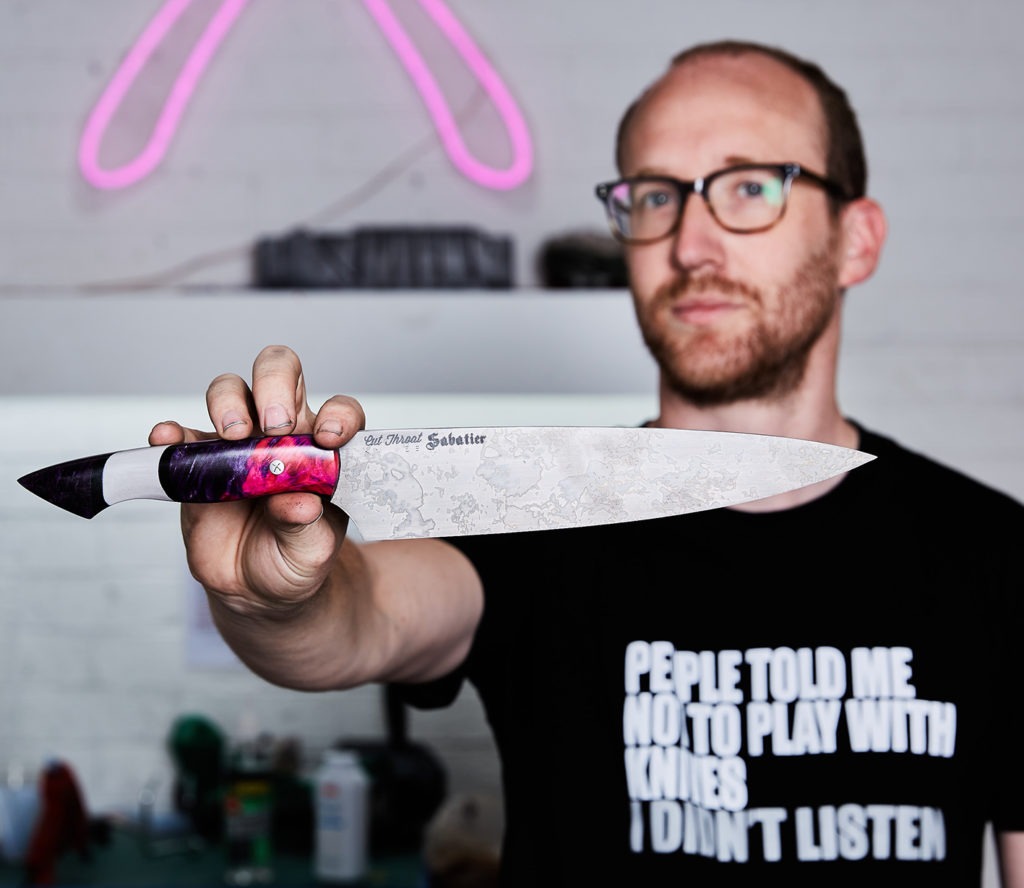
An art of lifeling learning
The two were separately seeking the same new path that would allow them to express their creativity, and both were soon drawn to expert knifemakers, with the aim to learn their craft. Astley did an informal apprenticeship with Barossa Valley knifemaker Baz Gardner; Mackinnon learned from Adam Parker, who plies his trade near Ballarat in Victoria.
Mackinnon and Astley have now established themselves as quality knifemakers. Each creates their own individual works of knifely art that grace kitchens across Australia.
“To make tools that other people use to create food is a really special thing,” Mackinnon says. “I feel honoured to be able to do that. I take that responsibility very seriously.”
For Astley, he loves the fact that knifemaking is a lifelong education. “You can never make the perfect knife,” he says. “You’re always learning, and every knife is new and different.”
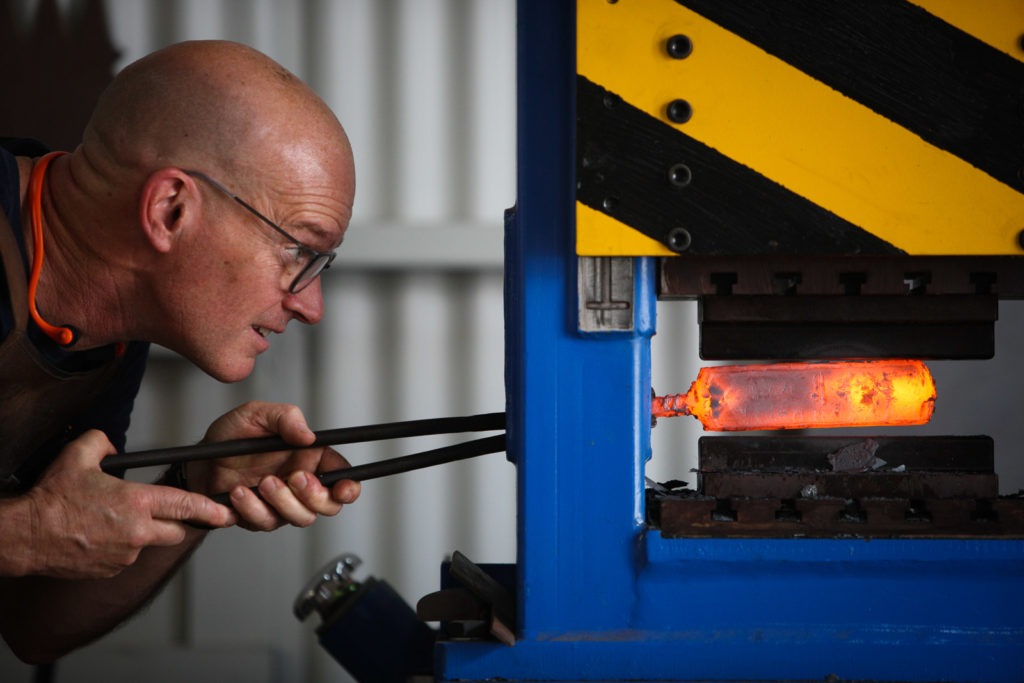
So, what sort of knives do I need?
In truth, a home cook doesn’t need a whole armoury of knives. Mackinnon says one good quality chef’s knife will stand you in good stead for most of your chopping and slicing needs.
“An eight-inch chef’s knife is generally what I recommend,” he says. “It’s easily the most versatile knife in your kitchen. It has a nice length of cut, which means it’s good for cutting up meat, but it’s also got a nice depth, so works well on a chopping board.”
Astley says that if you want to expand, you could go for two good knives – a good vegie knife and a good meat knife: “Because you use them slightly differently,” he says. “So one with more of a curved edge, and one with a flatter edge.”
Both suggest adding a paring knife to your collection if you feel the need, as they’re useful when precision is required. You might also consider a bread knife if the mood takes you.
“Bread knives tend to be a bit of an also-ran in the knife world,” Astley admits. “People think you just need it for slicing bread, but no matter how good your chef’s knife is, if you’ve got a tough-skinned tomato, pull out a good sharp bread knife and it works brilliantly.”
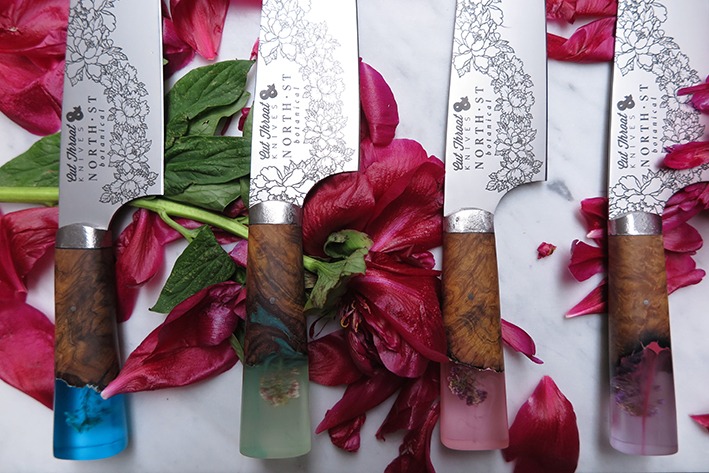
But what about my big block of knives?
Buying a block of knives might make your kitchen feel complete, but both Mackinnon and Astley say they’re really not necessary. Additionally, with so many knives at your disposal, you’re unlikely to care for any of them as well as you should.
“I would always recommend that people should take the amount of money they were going to spend on a block of knives, and just buy one good quality knife,” Mackinnon advises. “It’s always smarter to buy one knife and learn how to take care of it properly, then start adding in other knives where you see deficiencies.”
Astley agrees, saying that he often has customers who come in with a whole collection of knives that need sharpening all at once.
“They started off using their favourite knife and that gets blunt, so they go to the next knife and that gets blunt, then you get to the point where you’re chopping a roast with a paring knife,” he says. “If you just have one good knife, you’re more likely to keep it sharp.”
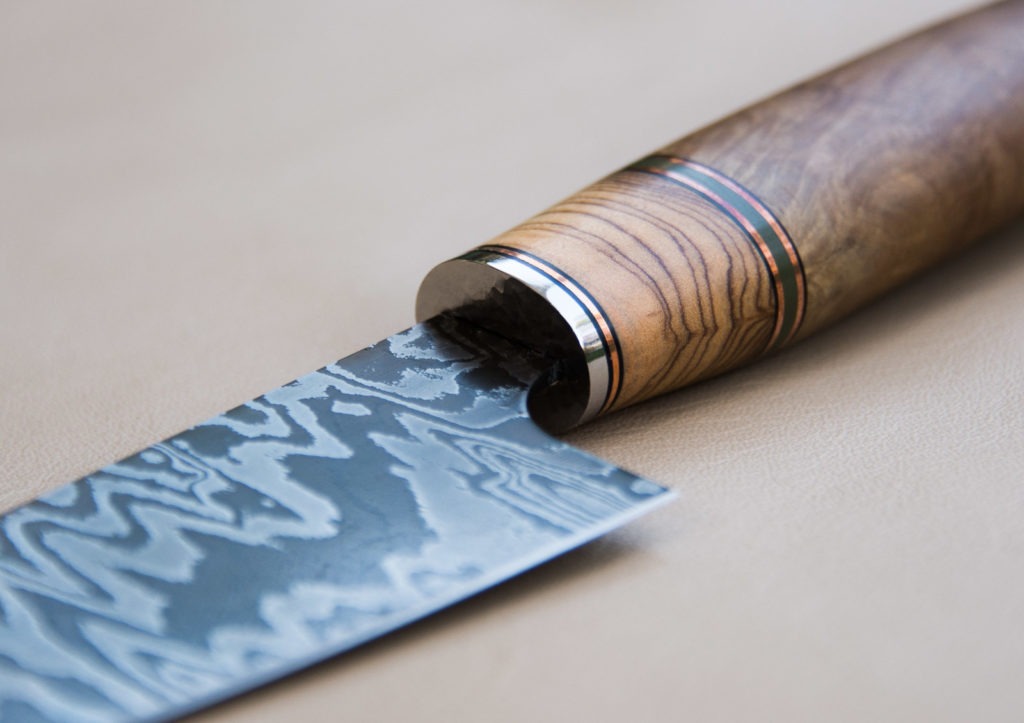
How do I care for my knife?
For your sharpening needs, you can always take your knife to an expert, but Mackinnon says it’s worthwhile learning how to maintain and sharpen your own blade.
“The first thing to know is that a steel and whetstones do two different things,” he says. “’Sharpening steel’ is a bit of a misnomer, as it doesn’t actually sharpen the blade. What happens is because a blade edge is so thin, over time it bends slightly because it’s being pushed onto a chopping board or hitting bone. By drawing the knife across a steel, this realigns the blade. It maintains the cutting edge for a longer period between sharpenings.
“However, the laws of entropy say that over time, no matter how good that steel is, how good the knife is, it will go dull with use. And so at that point, when the knife is dull and the steel is no longer doing anything, that’s when you need to sharpen it with whetstones.”
When it comes to the washing up, Astley stresses that you should never, ever put a good knife in the dishwasher.
“It’s a very aggressive, caustic environment,” he says. “The high temperature of the water and the caustic solution will nibble away your cutting edge. Even on stainless knives.”
Instead, just rinse your blade with warm, soapy water. Then dry it carefully and thoroughly.
The way you store your knife also matters. Tossing them in the cutlery drawer with everything else will only damage the cutting edge. And again, knife blocks aren’t the best choice when it comes to knife storage.
“In blocks, the blade rests down onto the wood itself,” Mackinnon says. “That’s putting pressure on the blade edge. A better way to store them is on a magnetic knife board, but if you get a metal one, glue some fabric over it so it’s not metal scratching on metal.”

Quality knives are so expensive – is it really worth it?
Cheap supermarket knives are produced en masse, with little care or attention to detail. The quality of the steel used also means that a handmade knife will outperform an el-cheapo knife in every way – a handmade knife will generally be harder, and a harder knife will hold its edge for a longer period, Mackinnon explains
“There’s also a difference in terms of how we perceive value,” he says. “Mass manufacturing is about making things as cheaply as possible, and as many as possible. Handcrafted is about reclaiming the notion of value, of where value lies.
“Maybe it’s valuing the guy who’s handmaking knives in Australia. Or maybe it’s valuing the knife that your grandfather gave to you. I think that’s where real value lies. Generally, when you’re purchasing a handmade knife, you’re buying a kitchen heirloom.”
To find out more about our featured knifemakers, head to cutthroatknives.com.au and astleywright.com.au. As well as selling the type of knife that you’d be proud to hand down to your grandchildren, the two both offer knifemaking courses.


